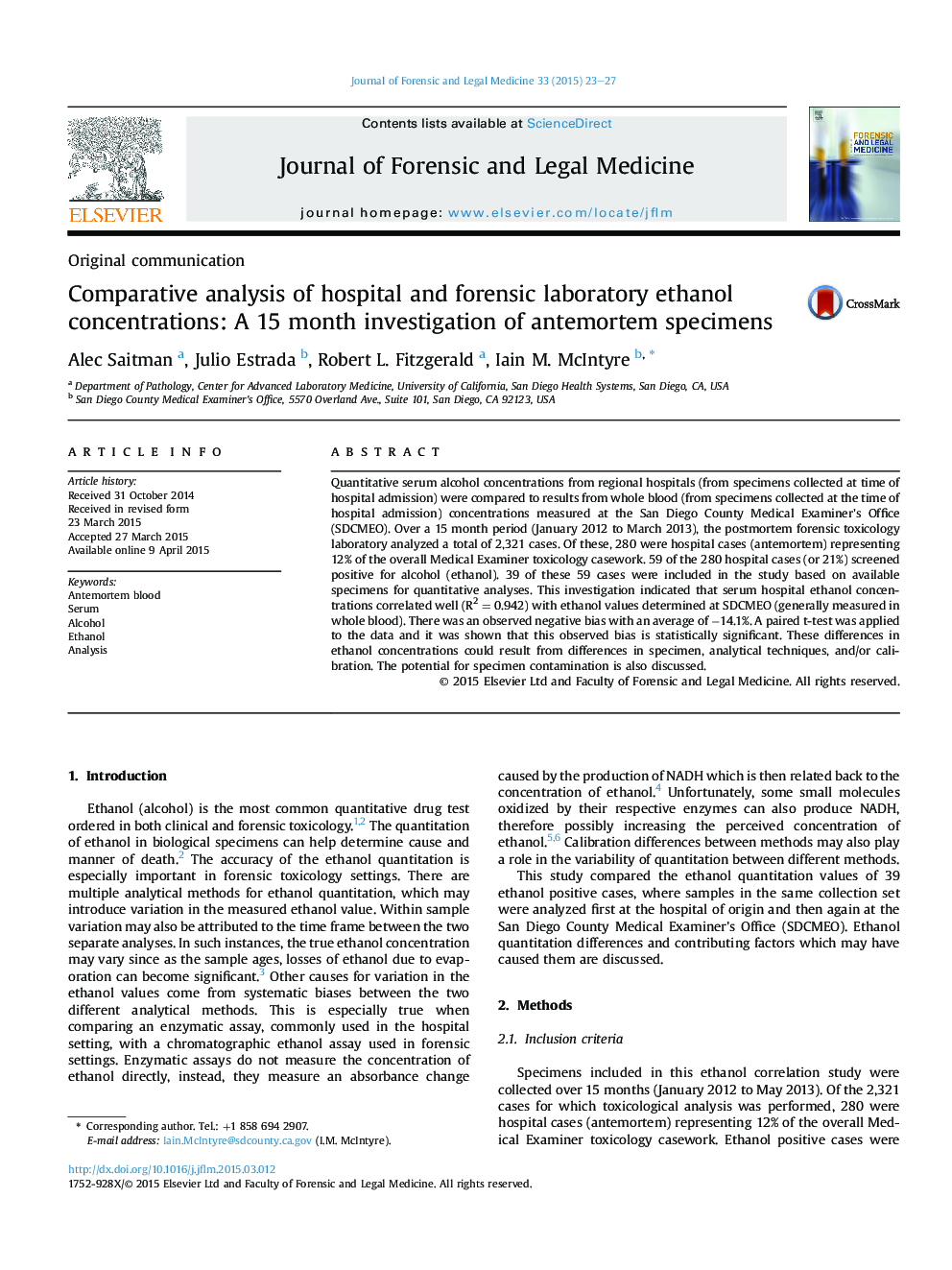| Article ID | Journal | Published Year | Pages | File Type |
|---|---|---|---|---|
| 101891 | Journal of Forensic and Legal Medicine | 2015 | 5 Pages |
•We compared two ethanol concentration values obtained from two sources (hospital and Medical Examiner's office).•We found that they correlated well (R2 = 0.942).•An average bias was found with respect to the values obtained at the Medical Examiner's office of −14.1%.•The bias is larger near the California legally mandated blood ethanol cutoff of 0.08 g/dL.
Quantitative serum alcohol concentrations from regional hospitals (from specimens collected at time of hospital admission) were compared to results from whole blood (from specimens collected at the time of hospital admission) concentrations measured at the San Diego County Medical Examiner's Office (SDCMEO). Over a 15 month period (January 2012 to March 2013), the postmortem forensic toxicology laboratory analyzed a total of 2,321 cases. Of these, 280 were hospital cases (antemortem) representing 12% of the overall Medical Examiner toxicology casework. 59 of the 280 hospital cases (or 21%) screened positive for alcohol (ethanol). 39 of these 59 cases were included in the study based on available specimens for quantitative analyses. This investigation indicated that serum hospital ethanol concentrations correlated well (R2 = 0.942) with ethanol values determined at SDCMEO (generally measured in whole blood). There was an observed negative bias with an average of −14.1%. A paired t-test was applied to the data and it was shown that this observed bias is statistically significant. These differences in ethanol concentrations could result from differences in specimen, analytical techniques, and/or calibration. The potential for specimen contamination is also discussed.
